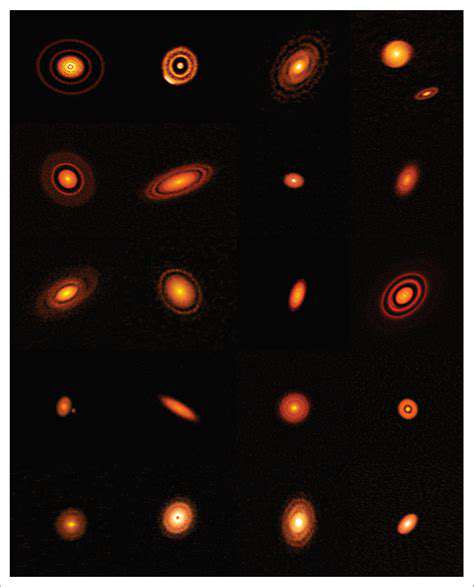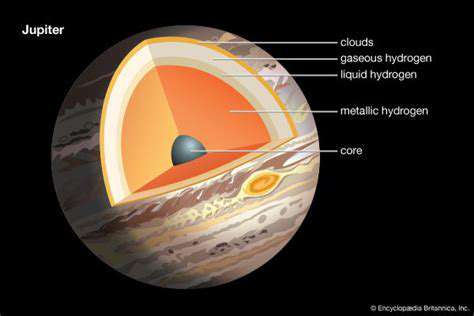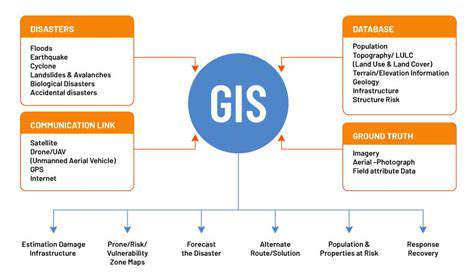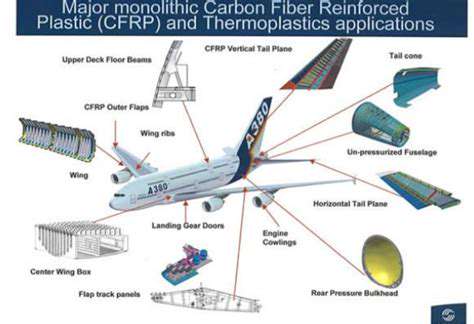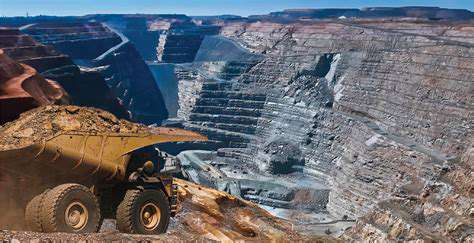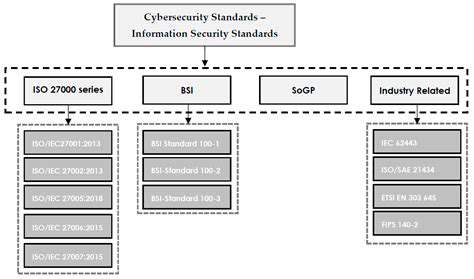That fine, powdery blanket covering the Moon's surface isn't just a nuisance - it's a mission-critical challenge. What makes lunar dust so problematic is its uncanny ability to cling to everything it touches, from spacesuit fabrics to delicate scientific instruments. This clinginess stems from two key factors: the dust's microscopic size and its unique electrostatic properties. Unlike Earth dust, these particles have razor-sharp edges from billions of years of meteorite impacts without weathering.
The technical term for this material - lunar regolith - barely captures its problematic nature. Each particle's enormous surface area relative to its size creates molecular-level attractions that are hard to break. Van der Waals forces, those weak molecular attractions we rarely notice on Earth, become a dominant force in the Moon's vacuum. Combine this with electrostatic charges from solar radiation, and you've got a perfect recipe for dust that won't let go.
Effects on Equipment and Spacesuits
The Apollo missions taught us harsh lessons about lunar dust behavior. Fine particles worked their way into every crevice, wearing down mechanical joints and scratching optical surfaces. Modern spacesuits face even greater challenges - their complex joints and life support connections are particularly vulnerable. Dust accumulation on thermal control surfaces can cause dangerous overheating, while particles in moving parts accelerate wear exponentially.
Consider the implications for solar panels: a thin dust layer can reduce power generation by 50% or more. For long-term lunar bases, this isn't just an inconvenience - it's an existential threat to life support systems. The abrasive nature of the dust also means standard cleaning methods used on Earth would likely damage sensitive equipment.
Potential Health Impacts on Astronauts
Apollo astronauts reported eye irritation and lunar hay fever symptoms that lasted days after exposure. The real concern lies in the particles' size and shape - sharp, jagged fragments small enough to penetrate deep lung tissue. Unlike terrestrial dust, there's no weathering process to round off the edges. The long-term effects of repeated exposure could include serious pulmonary fibrosis, making this a critical worker safety issue for lunar operations.
Secondary risks emerge from dust contamination inside habitats. Without Earth-like gravity, particles remain suspended longer, increasing inhalation risks. The dust's chemical reactivity - heightened by constant solar radiation exposure - might create toxic compounds when mixed with cabin air and moisture.
Mitigation Strategies and Future Research
Current research explores three parallel approaches: prevention, protection, and removal. Prevention focuses on developing dust-phobic materials using nano-scale surface patterning that minimizes contact points. Protection involves improved airlocks and cleaning stations to limit dust transfer. Removal techniques range from electrostatic curtains to targeted gas jets.
The most promising avenue may be combining multiple approaches. For example, a spacesuit might use ionized gas jets to remove loose particles, followed by an adhesive roller for stubborn ones. Future lunar bases might deploy autonomous dust-cleaning robots as part of routine maintenance. What's clear is that solving the dust challenge requires solutions as multifaceted as the problem itself.
Electrostatic Forces at Play
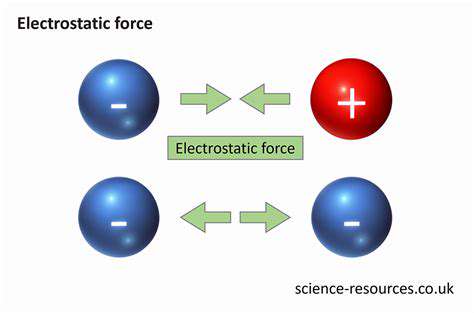
Understanding the Fundamentals
Those mysterious forces that make socks cling together in the dryer are the same ones plaguing lunar explorers. Electrostatic attraction occurs because the Moon's surface becomes electrically charged by solar wind and UV radiation. Unlike Earth, where charges quickly dissipate through our atmosphere, the Moon's vacuum preserves these charges for extended periods.
This charging creates potential differences of thousands of volts between sunlit and shadowed areas. Dust particles act like tiny capacitors, storing these charges and creating strong attraction to any nearby surface. What's particularly tricky is that standard grounding techniques used on Earth are far less effective in lunar conditions.
Coulomb's Law: Quantifying the Force
The mathematical relationship describing these forces was first formulated by Charles-Augustin de Coulomb in 1785. His inverse-square law shows why lunar dust behaves so differently than Earth dust - the forces decrease with distance squared, but the tiny size of lunar particles means they can get extremely close to surfaces.
In practical terms, this means a single dust particle can exert an adhesive force thousands of times its own weight. Multiply this by billions of particles, and you begin to understand why lunar dust contamination is so persistent. The lack of humidity eliminates water's natural discharge effects that we take for granted on Earth.
Applications in Everyday Life
Interestingly, the same principles causing lunar dust headaches make modern technology possible. Photocopiers use controlled electrostatic attraction to position toner particles precisely. Industrial powder coating relies on electrostatic application for even coverage. Even the air filters in your car use charged fibers to capture dust particles.
The key difference is control - on Earth we can manage these forces through humidity control and grounding. On the Moon, engineers must develop new approaches to either neutralize charges or exploit them for beneficial purposes like dust removal.
Electrostatic Fields: Visualizing Interactions
Imagine the lunar surface as a giant patchwork of positive and negative charges. The terminator line (where day meets night) becomes especially interesting - here, extreme potential differences can actually levitate dust particles. Some researchers believe this explains the mysterious horizon glow observed by Apollo astronauts.
Modern modeling techniques allow scientists to simulate these complex field interactions. Such models are crucial for predicting how different spacecraft materials will interact with lunar dust under various lighting conditions.
The Role in Chemistry and Materials Science
Surface chemistry plays a surprising role in dust adhesion. The constant bombardment by solar wind alters the chemical composition of dust particles, creating chemically active sites. These dangling bonds create additional adhesion through chemical interactions beyond simple electrostatics.
Materials scientists are responding by developing self-cleaning surfaces inspired by lotus leaves, with microscopic structures that minimize contact area. Some experimental coatings incorporate conductive elements to help dissipate charges before dust can adhere.
Electrostatics in Technology
The challenge of lunar dust is driving innovation in electrostatic technology. One promising approach uses alternating electric fields to create traveling waves that literally sweep dust off surfaces. Other concepts employ electron beams to neutralize charges on sensitive equipment.
What's emerging is a new generation of active dust mitigation systems that could have applications far beyond space exploration, from solar panel maintenance in deserts to cleanroom technologies here on Earth.
The Physical Properties of Lunar Dust
Lunar Dust Adhesion: An Overview
That gray powder covering the Moon's surface is anything but ordinary. After analyzing Apollo samples, scientists were shocked by the particles' complexity. Unlike Earth dust smoothed by wind and water, lunar particles retain jagged, fractal-like edges from eons of meteorite impacts. This gives them an almost Velcro-like quality at microscopic scales.
The particles' iron-rich composition adds another layer of complexity. Tiny nanophase iron particles embedded in the glassy matrix make the dust both chemically reactive and magnetically responsive. This unique combination of properties explains why lunar dust behaves so differently than any terrestrial analog.
Electrostatic Forces and Lunar Dust
Solar wind bombardment continuously charges the lunar surface, creating an ever-changing electrostatic landscape. During the lunar day, UV radiation knocks electrons free, leaving a positive charge. At night, electrons accumulate, creating negative potentials. This daily flip-flop causes fascinating phenomena like dust fountains and electrostatic levitation.
What makes this particularly challenging for engineers is that different materials charge differently under the same conditions. A spacecraft might develop dangerous potential differences simply by having parts in sunlight and shadow simultaneously, creating perfect conditions for dust accumulation.
The Role of Surface Morphology in Adhesion
Scanning electron microscope images reveal the dust's terrifying structure - imagine shattered glass shards at nanometer scale. These jagged edges create countless contact points with any surface they touch. The irregular shapes also prevent particles from rolling away like rounded sand grains would.
Adding to the challenge, the particles' glassy nature makes them semi-sticky even without electrostatic effects. Some researchers compare it to trying to clean up tiny bits of broken bottle mixed with superglue - a nightmare scenario for equipment maintenance.
Mitigating the Effects of Lunar Dust Adhesion
The solution will likely involve multiple complementary strategies. Passive approaches include developing ultra-smooth surfaces that minimize contact points. Active methods might use electrostatic or ultrasonic vibration to break adhesion. Material selection is critical - some metals actually attract less dust than others under lunar conditions.
Perhaps the most elegant solutions may come from biomimicry - studying how certain insects keep clean in dusty environments or how gecko feet stick without adhesives. Nature has solved similar problems through millions of years of evolution.
Mitigation Strategies for Lunar Dust Adhesion
Understanding the Nature of Lunar Dust
Before we can defeat lunar dust, we must first understand our adversary. The Apollo missions brought back samples that still surprise researchers today. Recent studies using atomic force microscopy reveal that individual dust particles can have adhesive forces up to 1,000 times stronger than similarly sized Earth particles.
The dust's composition tells a violent history - it's essentially pulverized bedrock from countless meteor impacts, with a significant fraction converted to glass by the tremendous heat of impacts. This glass content may explain why lunar dust seems to weld itself to surfaces under certain conditions, a phenomenon unseen in terrestrial environments.
Surface Coatings and Treatments
Material science is rising to the challenge with innovative coatings. One approach uses fluorinated polymers that combine low surface energy with electrical conductivity. Others experiment with self-healing materials that can repair minor scratches where dust might otherwise accumulate.
An unexpected breakthrough came from studying thermal control coatings - some formulations designed for heat management incidentally show remarkable dust-repellent properties. The key seems to be in achieving just the right balance between surface energy and electrical properties.
Design Considerations for Spacecraft Components
Smart design can reduce dust problems before they start. Avoiding flat horizontal surfaces prevents dust accumulation. Using rounded edges instead of sharp corners makes cleaning easier. Even something as simple as orienting solar panels vertically can significantly reduce dust buildup.
Modular design principles allow for easy replacement of dust-compromised components. The lesson from Earth's dusty environments is clear: design for maintenance from the beginning, because dust will find its way into everything eventually.
Protective Clothing and Equipment
Next-generation spacesuits incorporate multiple dust defenses. Outer layers use tightly woven fabrics that minimize particle penetration. Specialized coatings allow dust to be brushed off more easily. Some designs include integrated air jets that blast dust away during suit removal.
The helmet visor presents particular challenges - anti-static coatings help, but researchers are also developing self-cleaning surfaces that use photocatalytic reactions to break down dust under sunlight. The goal is a suit that can withstand months of daily use without accumulating dangerous dust levels.
Cleaning and Maintenance Protocols
Effective dust management requires systematic approaches. Current protocols emphasize containment - using airlocks as dirty rooms where suits can be cleaned before entering habitats. Robotic vacuum systems using non-contact methods like electrostatic collection show promise for interior cleaning.
An interesting finding from Antarctic research stations: the most effective cleaning often combines multiple methods - first using gas jets to remove loose particles, followed by adhesive rollers for stubborn ones, finishing with electrostatic treatments for residual dust.
Advanced Mitigation Techniques
The cutting edge of dust mitigation looks positively sci-fi. One experimental system uses standing ultrasonic waves to levitate dust off surfaces. Another approach employs electron beams to neutralize charges on both dust and equipment surfaces.
Perhaps most intriguing are biomimetic solutions inspired by nature. Certain desert beetles harvest water by condensing fog on their backs - a similar principle might be adapted to collect and remove dust. As we push the boundaries of dust mitigation, we're discovering solutions that could revolutionize how we handle particulates in all extreme environments.

